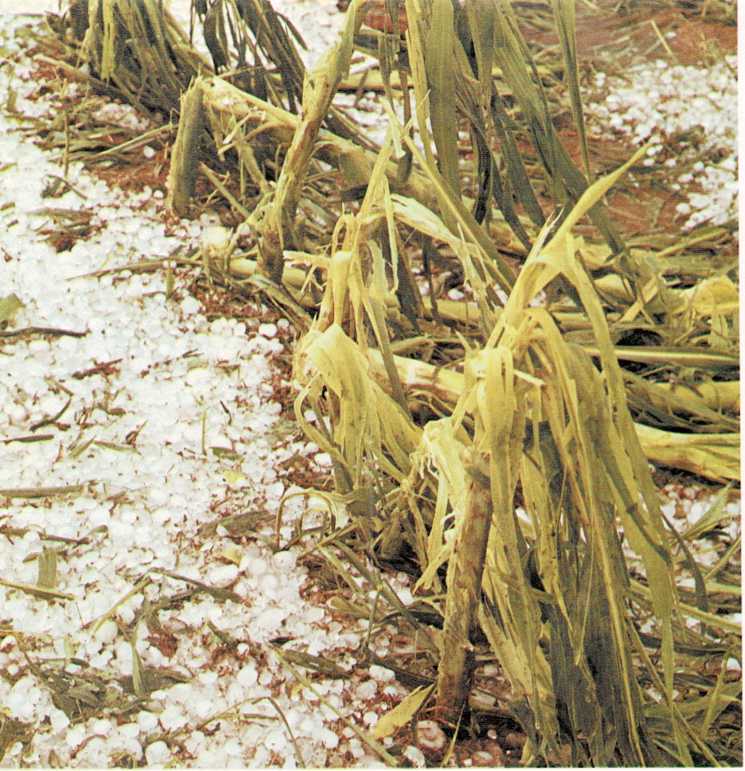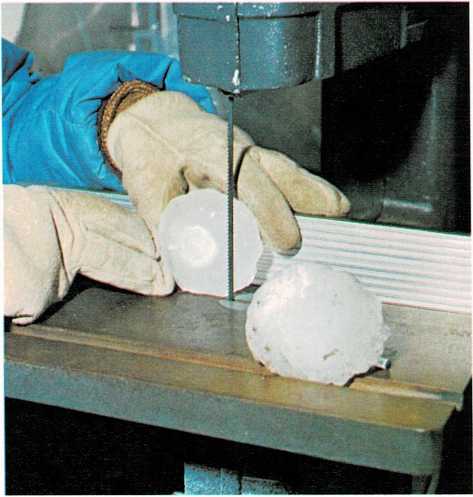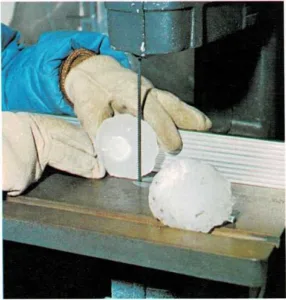Beads and balls of ice
Hail and sleet are frozen rain. But they are very different. Sleet is
tiny beads of ice. Hail is lumps of ice and snow that may be as big as
baseballs!
Hailstones begin as ordinary raindrops in a rain cloud. Gusts of wind
carry them up to the highest part of the cloud. Here, where the air is
freezing cold, the raindrops turn to ice. Snow forms in this part of the
cloud, so the drops of ice get a coating of snow. Then they are so
heavy, they fall.
As they fall back into the part of the cloud where other raindrops are
forming, they are covered with water. Again, a gust of rising wind
catches some of them and lifts them up. The coat of water freezes, and
they get another coat of snow. Again, they fall.
Hailstones may rise and fall this way many times. Each time, they grow a
little bigger and heavier. Finally, they become so heavy the wind can’t
lift them any more. They keep falling until they come to earth— where
they rattle on roofs, smack against leaves, and bounce on the grass.
Sleet is made when tiny drops of very cold water in a cloud get mixed
with falling snowflakes. The snow and water freeze together into little
beads of ice that sting your face and pop against windowpanes.

hailstones in a cornfield
Hailstones begin as raindrops. They are carried up into cold air, where
they freeze. As they fall, they are covered with layers of snow and ice.
This often makes them grow as big as golf balls—or bigger!
the inside of a hailstone
This large hailstone has been sawed in half to show the many layers of
snow and ice inside it.


